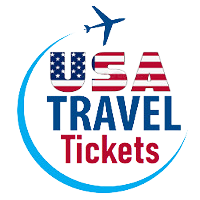Posted By Admin on August 27, 2021 Comments (10)
Summer continues, and so does the COVID 19 pandemic. But the borders between states are already opening, air travel is resuming, which means there are no serious obstacles to spending a vacation abroad by the warm sea or going on a trip within the US. It is quite possible to make the flight as safe as possible.
Any public space, including the airport and aircraft cabin, is a risk zone, and vigilance is needed anywhere and at any time.
1. Wash your hands with soap and water as often as possible, especially in public places. If you cannot wash your hands, use hand sanitizers with at least 60% alcohol. These can be gels or sprays that are sold at any pharmacy or beauty store.
2. If possible, do not touch your nose, mouth, and eyes with dirty hands. The virus is transmitted by airborne droplets and fluids, so stay away from people who sneeze or cough.
3. Do not eat or drink from shared utensils. Carry disinfectants with you (the same antiseptic spray). They are useful not only for cleaning hands but also for wiping the armrests and table on the plane.
4. If you are about to cough or sneeze, use disposable handkerchiefs or, if not at hand, do so in the crook of your elbow.
1. Hand antiseptic: Take a small package of antiseptic (up to 100 ml) into the aircraft cabin. Carrying liquids of a larger volume is prohibited by air transportation rules. You can put a larger bottle in your luggage.
2. Prescription medicines: If you need to take your medications all the time, bring some extra medications with you in case of emergencies. It is also better to take prescriptions with you, otherwise, the drugs may remain at customs.
3. First aid kit: In addition to the necessary medicines, put in the first-aid kit a remedy for allergies, runny nose, sore throat, diarrhea, a bactericidal plaster, and an antipyretic drug. A thermometer is also useful, but not a mercury one.
At the airports, security measures are now strengthened: before boarding, passengers are required to measure the temperature. A sick person with a fever will not be allowed on board. But the incubation period in case of infection with COVID-19 is quite long: from 5 to 14 days. That is, a person can carry a virus in himself, secrete it, infect others and not know about it. Moreover, all this time there may not be any symptoms, and the temperature also remains normal. In this situation, a person during the incubation period will calmly pass the temperature filter and will be allowed into the aircraft cabin.
Choose seats in the front rows - there is less traffic during the flight. The most active movement is from the middle to the tail of the aircraft since it is in the tail section that the toilet is located.
Choose a window seat. During medium and short flights, 40% of flight passengers do not leave their seats if they sit by the window. Most often, those who sit on the aisle are more likely to move around the cabin.
1. If you hear a cough or sneeze, look at how far away the source of the disturbing sounds is. The further it goes, the safer.
2. If the passenger coughs in the next seat, politely invite him to put on a mask and put on yourself too - show solidarity.
3. Wipe the folding tables and armrests with antiseptic wipes or spray them with antiseptic. Also, use an antiseptic to wipe the surface of the carry-on baggage that you took with you to the cabin and the gadgets that you will use in flight.
Important: Masks are needed primarily for those who are already a carrier of the disease. This applies not only to coronavirus but also to any respiratory disease.
If you have planned a trip, but you feel unwell, have symptoms of a cold, or have a fever, it is better to cancel the flight and not expose your fellow travelers to potential danger.
Copyrights © 2015 USA Travel Tickets . Design by USA Travel Tickets
 USA Travel Tickets
USA Travel Tickets